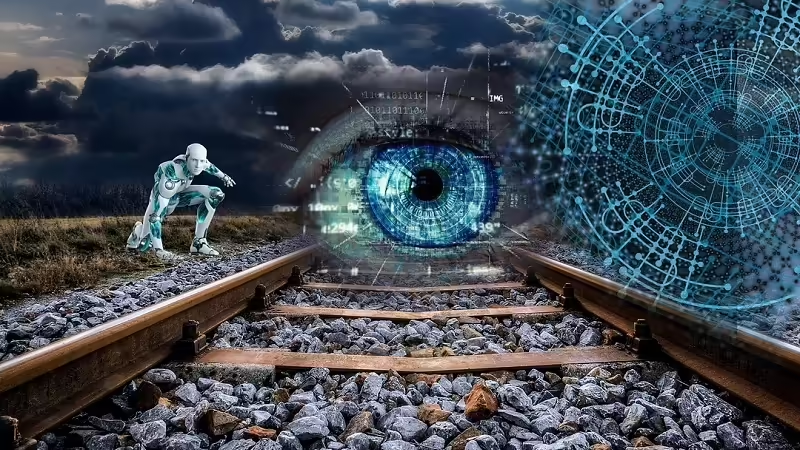
3D printed and laser cooked food is an innovation that could revolutionize the food industry and gastronomy. It is a process that consists of creating food from ingredients that are crushed and molded by a 3D printer, and then cooking them with different types of laser light to achieve the desired cooking point, texture and flavor.
This technology has several advantages, such as the possibility of customizing food according to each person’s preferences and nutritional needs, reducing waste and the environmental impact of food production, and improving food safety by eliminating the risk of contamination by microorganisms.
An example of this innovation is the 3D-printed, laser-cooked chicken meat developed by a team of scientists at Columbia University. The researchers managed to mimic the shape and appearance of traditional chicken meat, using shredded meat as raw material and applying different laser wavelengths to cook it inside and out. According to their tests, the laser-printed and cooked meat turned out juicier, shrunk less and tasted better than conventional meat.
3D printed and laser-cooked food is a reality that could open up new possibilities for the creation and enjoyment of food, as well as for solving global problems such as hunger and sustainability, its inventors and developers say. But it is something that is highly questioned by most people, since at the end of the day, it is a sham and not something natural.
The author and the origin of this idea
The goal is to create personalized, nutritious and appetizing food from natural ingredients processed into paste or powder form. 3D printing makes it possible to shape the food layer by layer, while the laser can selectively cook it according to the consumer’s preferences.
One of the pioneers of this idea is entrepreneur Antony Dobrzensky, who together with chef Marcio Barradas founded Food Ink, the world’s first 3D-printed restaurant. In 2016 he opened a location in London, where not only the food was printed but also the crockery, cutlery, chairs, tables and lamps. Since then, Food Ink has become an itinerant gourmet proposal that tours major cities such as Barcelona, Las Vegas or Tokyo.
Another of the driving forces behind this idea is researcher Giuseppe Scionti, from the Universitat Politècnica de Catalunya, who created an alternative to meat that prints in 3D and is composed of vegetable ingredients. His company, Nova Meat, uses a patented technology that makes it possible to reproduce the texture and flavor of animal meat without slaughtering animals or harming the environment.
The new era of cooking: 3D printing and lasers
Cooking is an art that has always been in constant evolution, adapting to the tastes, needs and technologies of each era. In recent years, we have witnessed the emergence of new culinary techniques that take advantage of 3D printing and lasers, two tools that make it possible to create customized, innovative and surprising dishes.
3D printing is a process that consists of creating three-dimensional objects from a digital model by depositing successive layers of material. This technology has been applied to the kitchen to create foods with unique shapes, textures and flavors that could not be achieved with traditional methods. For example, it is possible to print chocolates with complex designs, cakes with a variety of fillings or realistic-looking vegetable meats.
The laser is a device that emits a concentrated and powerful beam of light, which can cut, engrave or heat different materials. In the kitchen, lasers are used to modify the physical and chemical properties of foods, creating original visual and taste effects. For example, it can cut fruit with precision, caramelize sugar without burning it, or mark patterns on the surface of food.
3D printing and lasers are two technologies that open up a world of possibilities for the kitchen of the future, offering greater creative freedom, greater customization and greater sustainability. However, they also pose some ethical, legal and social challenges, such as environmental impact, food safety or loss of tradition. It is therefore important for chefs and consumers to be aware of the benefits and risks of these innovations, and to use them responsibly and judiciously.
Imprinting the future of food: how technology is transforming gastronomy
Gastronomy is the art and science of preparing and serving food in an appealing and healthy way. Gastronomy has been influenced by the cultures, traditions and resources of each place, but also by technological advances that have made it possible to create new ingredients, techniques and forms of presentation.
One of the most revolutionary trends is 3D food printing, which consists of creating edible objects from successive layers of materials such as chocolate, pasta, cheese or meat. This technology makes it possible to customize food according to the preferences, nutritional needs or allergies of each person, as well as to design original shapes and textures that stimulate the senses. In addition, 3D food printing could help reduce waste, resource consumption and the ecological footprint of food production.
Another trend that is transforming gastronomy is the use of biotechnology to create alternative foods to those of animal origin, such as lab-grown meat or vegetable proteins. These foods seek to offer the same taste, texture and nutritional value as traditional meat products, but with a lower environmental and ethical impact. Some companies such as Impossible Foods or Beyond Meat have already launched burgers, sausages or nuggets made with vegetable ingredients that mimic the appearance and aroma of meat.
Finally, another trend that is impacting gastronomy is the use of digital technologies to improve food safety, traceability and quality. Whole genome sequencing, the Internet of Things or big data are some of the tools that make it possible to identify and prevent food safety risks, as well as to optimize production, transport and storage processes. These technologies also facilitate access to information on the origin, composition and nutritional value of food, helping consumers to make more informed and responsible decisions.
Are we ready to embrace this technology?
3D printing and lasers are two technologies that have revolutionized various fields of science, industry and art. But what happens when they are applied to the kitchen? Can we create customized, original and healthy dishes with these tools? Are we ready to embrace this culinary innovation?
3D printing consists of creating three-dimensional objects from a digital model by depositing successive layers of a material. In the kitchen, this material can be chocolate, cheese, pasta, meat or any other food that can be melted or pulverized. In this way, complex shapes, varied textures and flavor combinations can be designed that would be difficult or impossible to achieve with traditional methods.
The laser, on the other hand, is a concentrated beam of light that can cut, engrave or heat materials with great precision and speed. In the kitchen, it can be used to decorate, caramelize, toast or cook food without the need for direct contact. In addition, the temperature and time of exposure to the laser can be controlled to obtain different results.
Both technologies offer advantages such as customization, creativity, efficiency and hygiene. However, they also pose some challenges and limitations. For example, the cost of equipment and materials is high, making them difficult to access and cost-effective. Technical and artistic knowledge is also required to handle them correctly and obtain good results. On the other hand, the preferences and expectations of consumers, who may value the quality, taste and naturalness of food more than its appearance or novelty, must be taken into account.
3D printing and lasers are two technologies that can enrich the gastronomic experience and open up new possibilities for the kitchen. However, they are neither a magical solution nor a threat to tradition. They are tools that require skill, judgment and responsibility to be used properly. Therefore, the question is not whether we are ready to adopt this technology, but how we can take advantage of it in an ethical, sustainable and pleasurable way.
3D-printed, laser-baked cheesecake created
A team of engineers from Columbia University and Pace University has demonstrated that it is possible to create a 3D printed, laser-baked cheesecake that is completely edible and vegan.
To achieve this result, the researchers used a special 3D printer that could deposit layers of different ingredients in paste form, such as cookies, peanut butter, Nutella, mashed banana, strawberry jam, cherry extract and icing. They then used high-precision lasers to heat and cook the ingredients with millimeter control, similar to that used to caramelize a crème brûlée.
The engineers claim that this “digital cooking” technique has several advantages over traditional cooking, such as the possibility of customizing the nutritional and caloric content of the food, as well as creating innovative shapes and textures. In addition, they claim that cooking food with lasers is as safe as cooking with a microwave or oven.
However, they also recognize that 3D printed foods are considered ultra-processed and that their taste and appearance may not be very appetizing to some consumers. Therefore, they point out that this is an experiment that seeks to explore the potential of 3D printing in the food of the future, but that there is still a long way to go for this technology to be integrated into our homes and culinary habits.
Bill Gates and 3D printed food
One of the pioneers in this field is Bill Gates, the Microsoft founder and philanthropist, who has invested in several companies developing 3D printed food. For example, Gates is a major investor in Beyond Meat, a company that makes plant-based meat with a texture and taste similar to animal meat. Beyond Meat uses a 3D printer to create pea protein fibers that mimic muscle tissue.
Another Gates-backed company is Novomeat, a Spanish startup that also uses 3D printing to create plant-based meats. Novomeat uses a mixing device that is controlled by a computer program, which can combine different vegetable ingredients to obtain different organoleptic and nutritional properties. Thus, it can produce everything from steaks to meatballs or nuggets.







